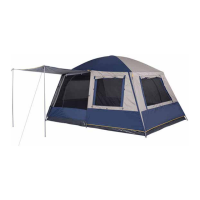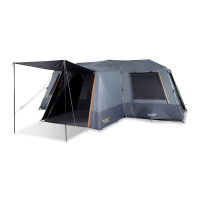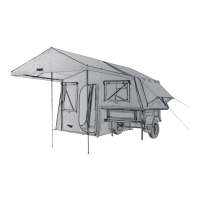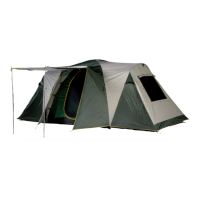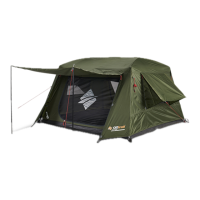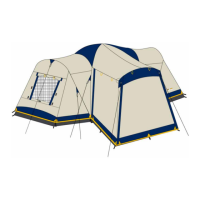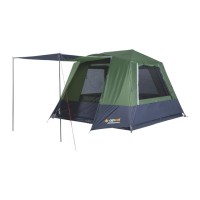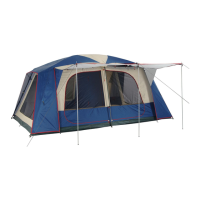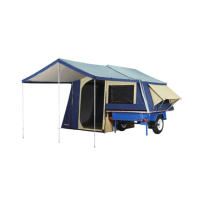Do you have a question about the OZtrail Highlander and is the answer not in the manual?
Choose a sheltered, level campsite and clear it of debris before pitching.
Lay out the tent inner and peg down the corners and base securely.
Assemble fibreglass and steel poles and insert them into the tent sleeves and hubs.
Erect the tent by installing wall poles and then drape and secure the fly sheet.
Attach and peg out all guy ropes for stability, using awning poles if needed.
Release fly attachments, fold the fly sheet in half, third, or quarters.
Collapse tent by removing poles, place poles in bag, fold tent flat.
Roll folded tent and fly together, secure with straps, and pack into carry bag.
Details OZtrail's two-year warranty against defects and exclusions.
Guidance on avoiding mould, caring for shock cord, and insurance.
Advice on UV resistance, avoiding water ponding, and storing dry.
Information on shock cord function, potential failure, and replacement.
Tips for zipper care, using heavy-duty tape, and peg removal.
Guidelines on fire retardant fabric and avoiding foreign substances.
Ensuring ventilation and avoiding fuel-burning devices inside the tent.
Advice on keeping flames away from the tent and using safe materials.
Exercising care with electricity and using only 12-volt lighting.
Do not pitch in flood-prone areas or near cliffs. Collapse in high winds.
Do not pitch under trees with dead branches or known to drop them.
Steps for measuring, cutting, and threading shock cord through pole sections.
How to remove broken sections and replace them with new ones.
Explains how condensation, zips, floor pressure, and pitching affect water entry.
Importance of level ground, tight guy lines, and proper pitching for waterproofing.
Techniques for smooth zip operation and preventing fabric jamming.
Methods for freeing caught fabric and crimping sliders to fix open zips.
